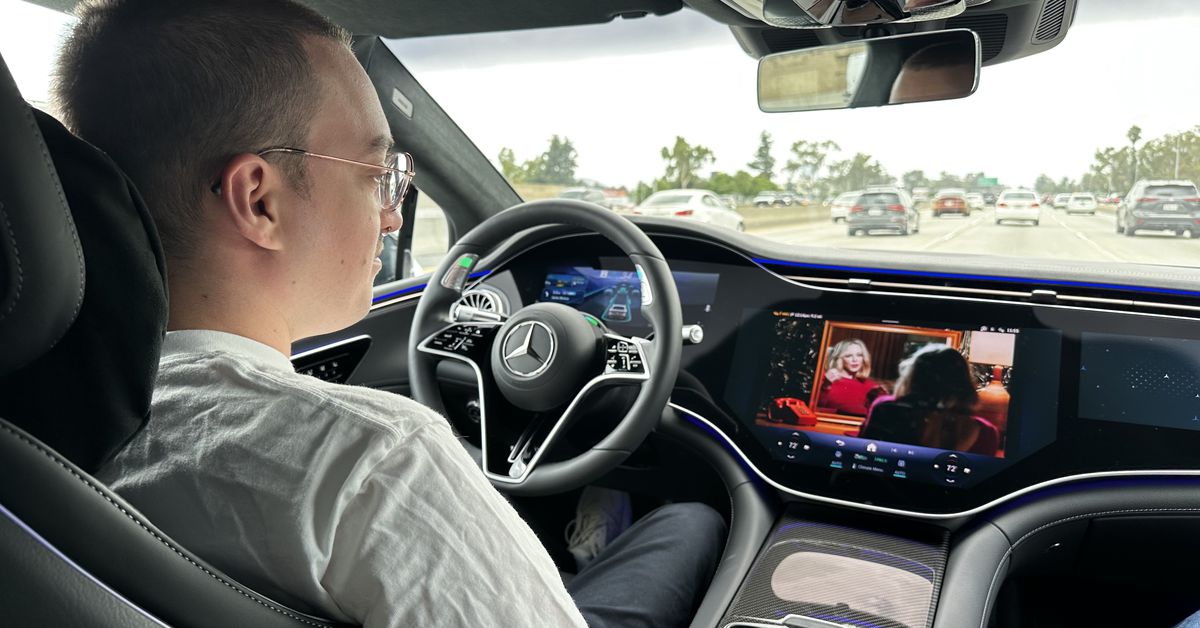Car screens are getting bigger — and weirder — and Google wants to help
Source: The Verge added 15th May 2024Google is lowering the barriers for new apps to be added to Android Auto and cars with Google software built-in, making it easier for developers of gaming and streaming apps to get them added to those platforms. It is also releasing new guidelines for developing apps for various screen sizes and shapes.
Google is launching a new program for car-ready apps, essentially expediting the process for developers to get their apps approved for in-car platforms. As part of this program, Google says it will “proactively” review mobile apps that are already compatible with the increasingly large-sized screens found in more modern vehicles.
Google is launching a new program for car-ready apps
“If the app qualifies, we will automatically opt it in for distribution on cars with Google built-in and make it available in Android Auto, without the need for new development or a new release to be created,” Vivek Radhakrishnan, technical program manager, and Seung Nam, product manager, write in an article. “This program will start with parked app categories like video, gaming and browsers with plans to expand to other app categories in the future.”
Google says it will roll out the new program in the coming months, but app developers who already have gaming or streaming apps that are compatible with large screens can request an earlier review.
Google insists that its top priorities are not just compatibility but also safety. Indeed, safety experts have been sounding a warning for years that the expanding screen size and proliferation of new touchscreen features have a direct correlation to the rise in distracted driving.
Google insists that its top priorities are not just compatibility but also safety
A recent study found that drivers selecting music with Apple CarPlay or Android Auto had slower reaction times than those who were high from smoking pot. And the Centers for Disease Control and Prevention qualifies “anything that takes your attention away from driving,” including sending text messages or checking navigation, as a potential dangerous distraction. Google has been trying to work its way through this problem for several years now, but they have yet to arrive at a definitive solution.
Google is competing with Apple, which has promised that its new, more immersive version of CarPlay is coming soon, starting with luxury automakers Porsche and Aston Martin. (Mercedes-Benz recently said it would not be adopting the multiscreen version of CarPlay.) Some automakers, like GM, are blocking CarPlay and Android Auto in certain models, preferring to build their own software experiences on top of Google’s native in-car software, Android Automotive.
As it adapts to new car designs, Google is releasing a new tiered system for app developers so they can get access to the company’s platforms. Google says the goal is to “minimize” requirements and “streamline the process” for developers.
Here’s how Google describes each tier:
Tier 1: Car differentiated
This tier represents the best of what’s possible in cars. Apps in this tier are specifically built to work across the variety of hardware in cars and can adapt their experience across driving and parked modes. They provide the best user experience designed for the different screens in the car like the center console, instrument cluster and additional screens – like panoramic displays that we see in many premium vehicles.
Tier 2: Car optimized
Most apps available in cars today fall into this tier and provide a great experience on the car’s center stack display. These apps will have some car-specific engineering to include capabilities that can be used across driving or parked modes, depending on the app’s category.
Tier 3: Car ready
Apps in this tier are large screen compatible and are enabled while the car is parked, with potentially no additional work. While these apps may not have car-specific features, users can experience the app just as they would on any large screen Android device.
Google is also releasing new tools to help developers account for new screen sizes and shapes in cars. Depending on the brand, cars have been introducing new-sized screens, including portrait displays and panoramic ones that span the length of the interior.
Google is launching a new emulator “for distant and panoramic displays so developers can visualize and test for the growing sizes and number of screens in the car and make sure apps can adapt to the variety of displays for the best experience.”
The company is also helping developers test user interfaces against new surfaces, like curved displays, insets, and angles. Developers will be able to change the emulator screen to match screen designs in various car models, without needing to bring in real cars for testing.
media: 'The Verge'
Related posts
Notice: Undefined variable: all_related in /var/www/vhosts/rondea.com/httpdocs/wp-content/themes/rondea-2-0/single-article.php on line 88
Notice: Undefined variable: all_related in /var/www/vhosts/rondea.com/httpdocs/wp-content/themes/rondea-2-0/single-article.php on line 88
Related Products
Notice: Undefined variable: all_related in /var/www/vhosts/rondea.com/httpdocs/wp-content/themes/rondea-2-0/single-article.php on line 91
Warning: Invalid argument supplied for foreach() in /var/www/vhosts/rondea.com/httpdocs/wp-content/themes/rondea-2-0/single-article.php on line 91
